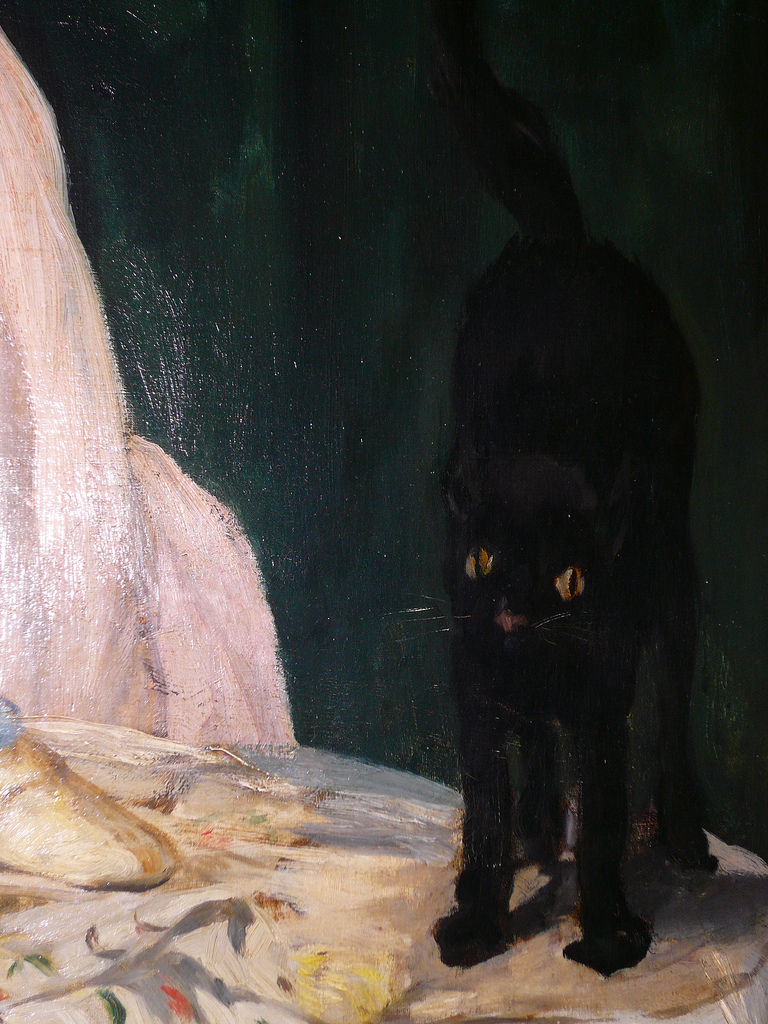

Thus, rejecting the classical order in depicting objects and portraying people, Manet proposed his unique variant of coherence (Hunter et al., 2000). As a result, he was interested in translating traditional themes into modern ones while applying the principle of irony like it can be noticed in Dejeuner Sur l’Herbe and Olympia. Edouard Manet influenced Impressionists as a painter who questioned academic standards of Renaissance art, its values, and rules (Hunter et al., 2000). Instead, they proclaimed the freedom of expression using innovative techniques based on representing artists’ feelings and visions. Impressionists tried to search for true art but not in the realistic expression of natural objects and the world around them. However, most researchers note that Modernism started in 1886 with the opening of the Independents Salon and the development of the Impressionists’ movement.

Furthermore, it can be associated with the beginning of the French Revolution or the invention of photography that influenced art as a powerful tool of expression for artists. In “Modernism and Its Origins in the 19th Century,” Hunter, Jacobus, and Wheeler (2000) state that the period of modern art in the Western world can be discussed as starting since the 18th century. Modernism and Its Origins in the 19th Century Baudelaire concludes that Guys followed a specific path of an artist when he started his way as an observer of life and then began to use specific means to express life in his works. Furthermore, for each period or era, modernity is different, and it has “its own gait, glance, and gesture” (Baudelaire, 1964, p. Thus, artists usually tend to reflect their vision of modernity in their works, but it is not appropriate to refer to old masters’ art pieces in order to understand modern beauty. In this context, modernity means the transient part of art in contrast to its eternal part. In the next section titled “Modernity,” Baudelaire also explains that he views artists as searching for modernity. Therefore, for Baudelaire, artists are those persons who have the gift of “seeing” and expressing what they can notice. Additionally, Guys like other artists are not part of the crowd, but he passionately observes the crowd and reflects it in his works. From this perspective, artists are like children who have the power to realize their curiosity and express it in works. However, in contrast to children, artists have “sound nerves,” and “genius is nothing more nor less than childhood recovered at will” (Baudelaire, 1964, p. Thus, in this context, Baudelaire (1964) views convalescence as an artist’s return to his childhood in visions and emotions. Thus, an artist usually wants to understand everything that can happen all over the globe, and his interests are not restricted only to politics and morals.īaudelaire also describes artists while referring to Guys as almost children for whom convalescence can be typical. Furthermore, such artists as Guys need to be viewed as men of the world because of their candid interest in the world around them. According to Baudelaire (1964), works of true artists are usually signed not only by their initials but also by their souls. In the section “The Artist, Man of the World, Man of the Crowd, and Child” of The Painter of Modern Life, Charles Baudelaire discusses the nature of a genial artist referring to Constantin Guys. Thus, Olympia can be regarded as Manet’s attempt to surprise and provoke the public using the surroundings of the Salon and making people discuss his unusual and controversial painting. The woman’s posture, glance, and overall situation seem to embarrass the audience and make it laugh. Not all spectators of Olympia can be viewed as satisfied with its quality and value while referring to the standards of the 1800s in painting and art. However, the traditional canons of painting are violated with reference to this art piece because of accentuating the immorality of the woman depicted with the help of portraying her impudent nudity in pale yellowish colors. Still, Olympia’s body and draperies are expressed in delicate colors, using gentle brushstrokes, and all the details of the background are noticeable (“Edouard Manet – Olympia,” 2014). However, there are no tries to idealize the presented image of Olympia or depict her in a more acceptable and pleasant way (Harrison, Wood, & Gaiger, 1998). Art pieces need to stimulate certain feelings in viewers because of the beauty of represented objects and the technique used by an artist.


 0 kommentar(er)
0 kommentar(er)
